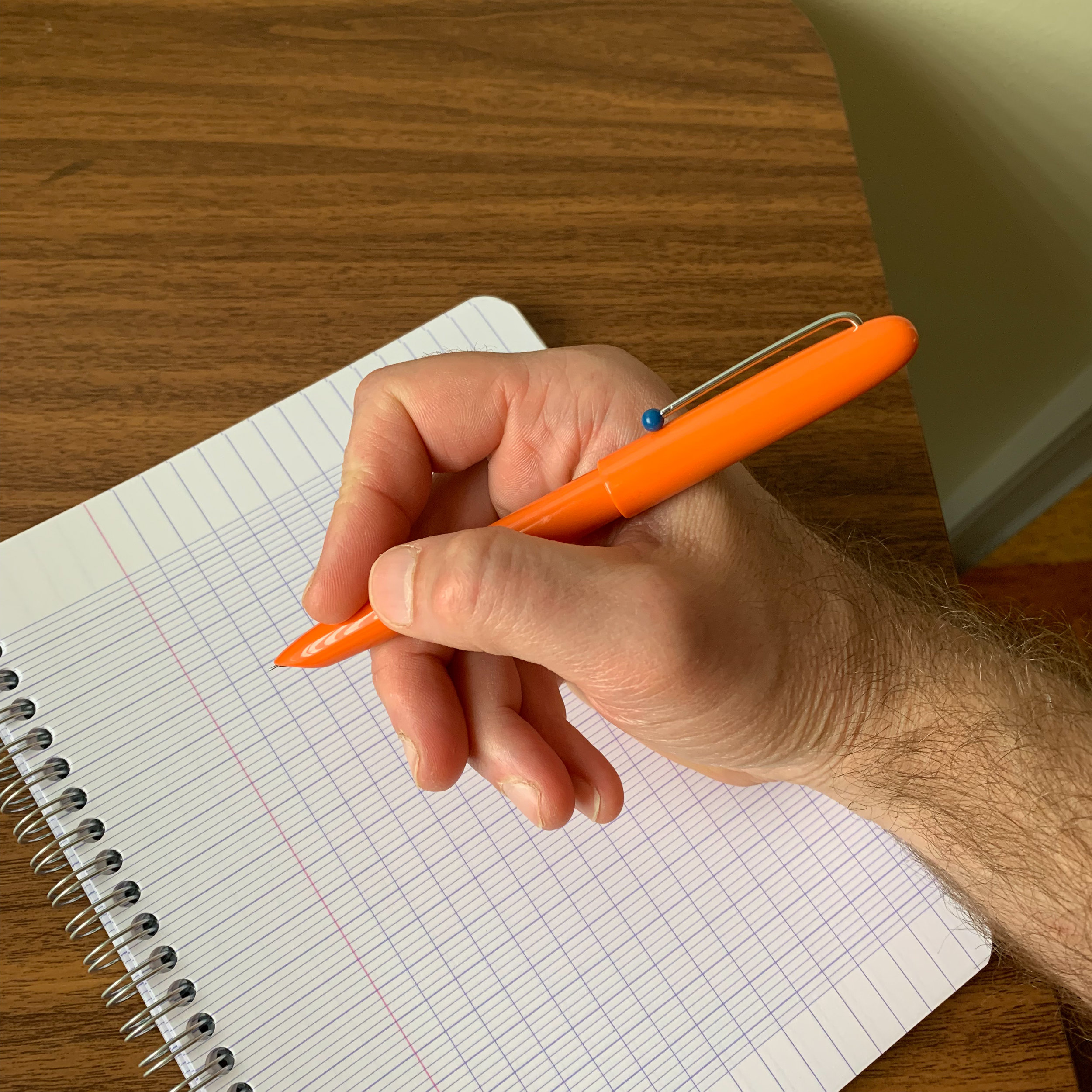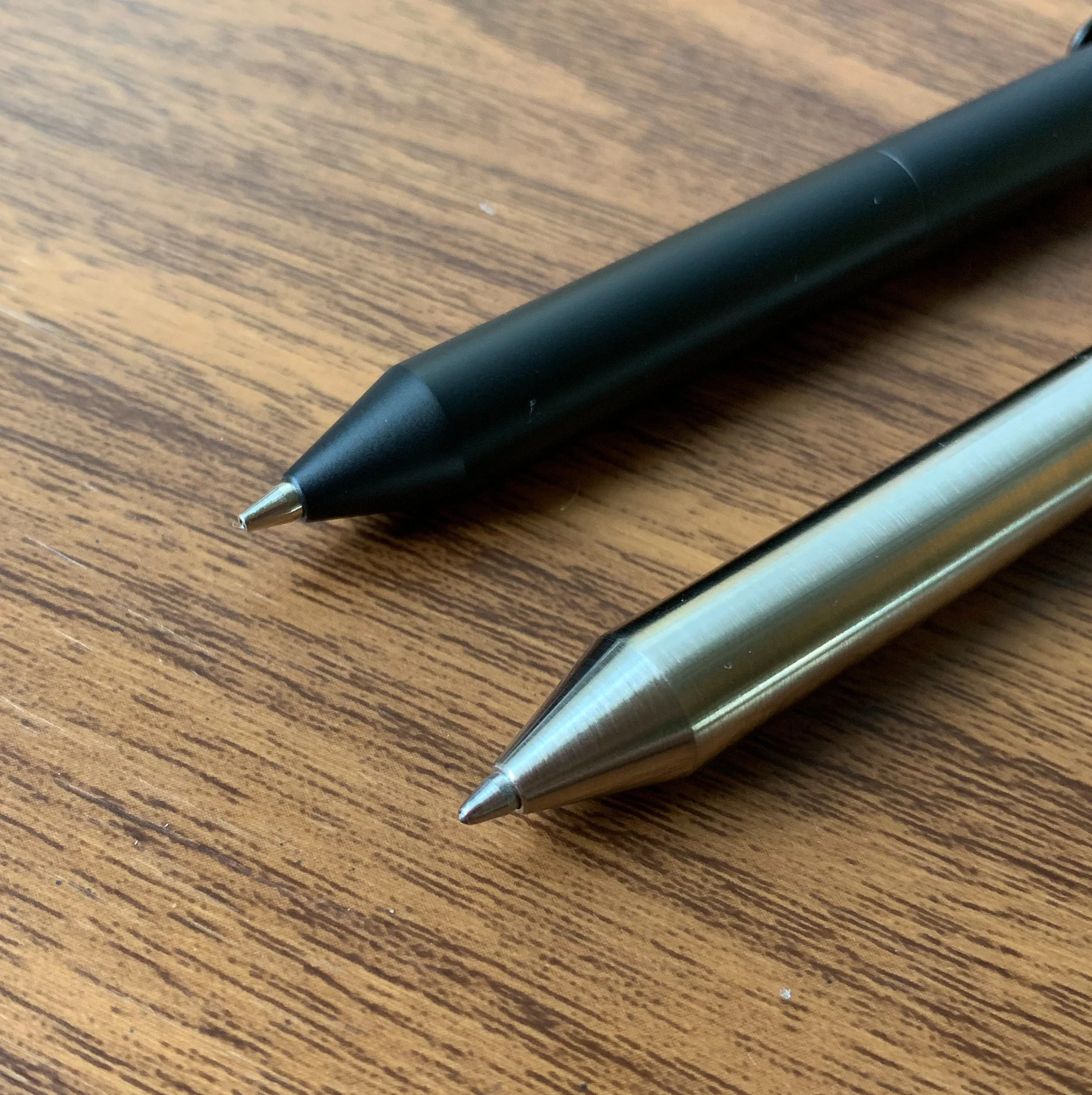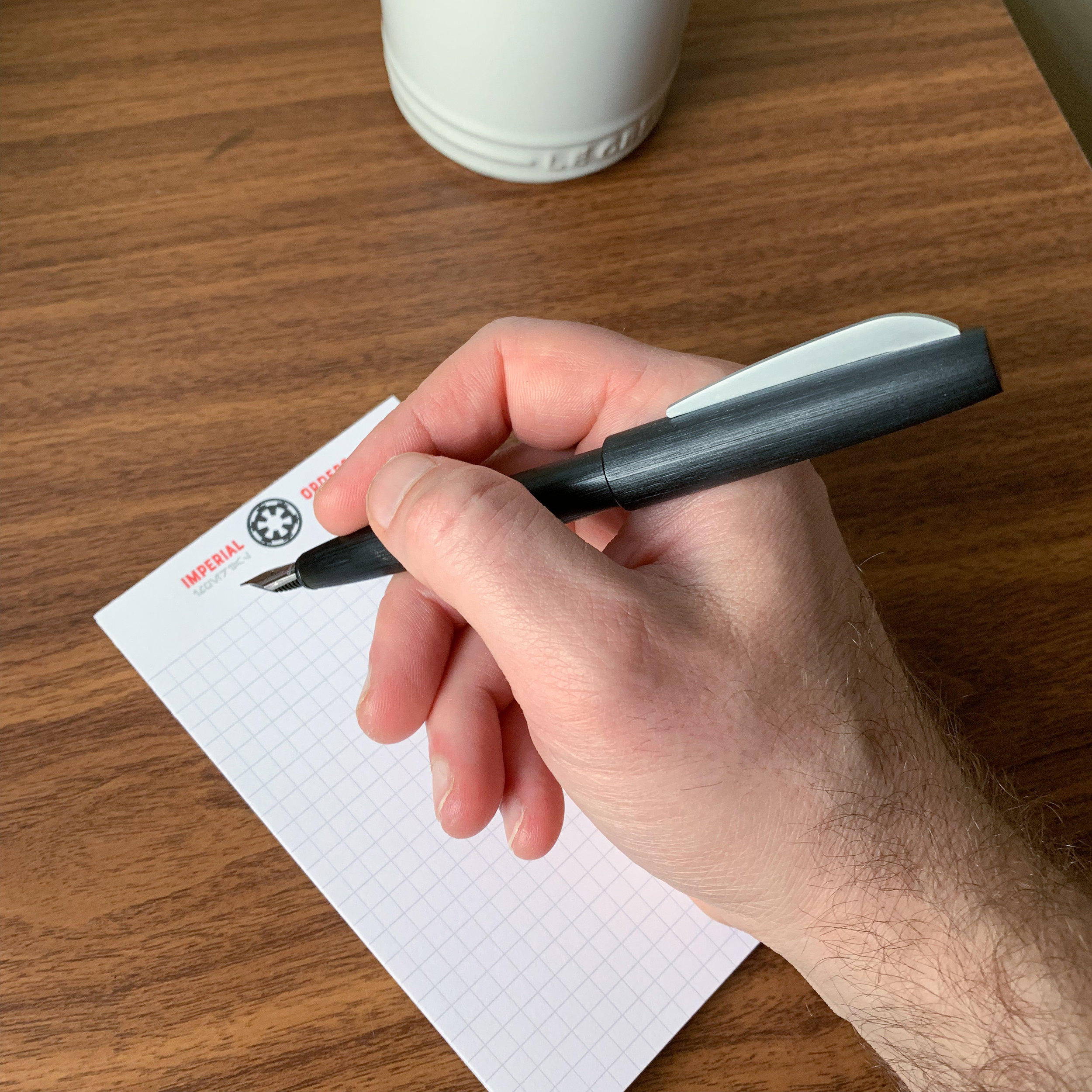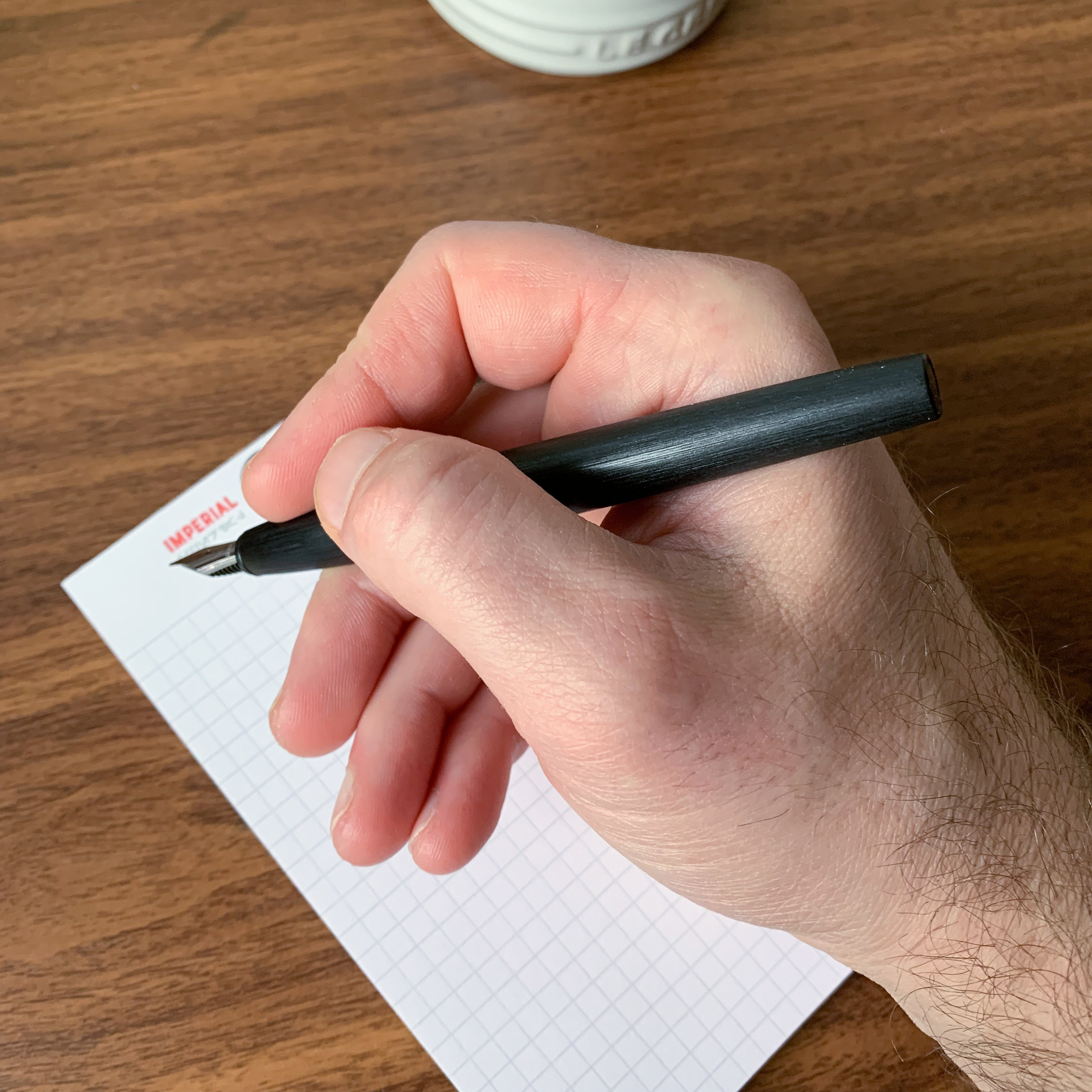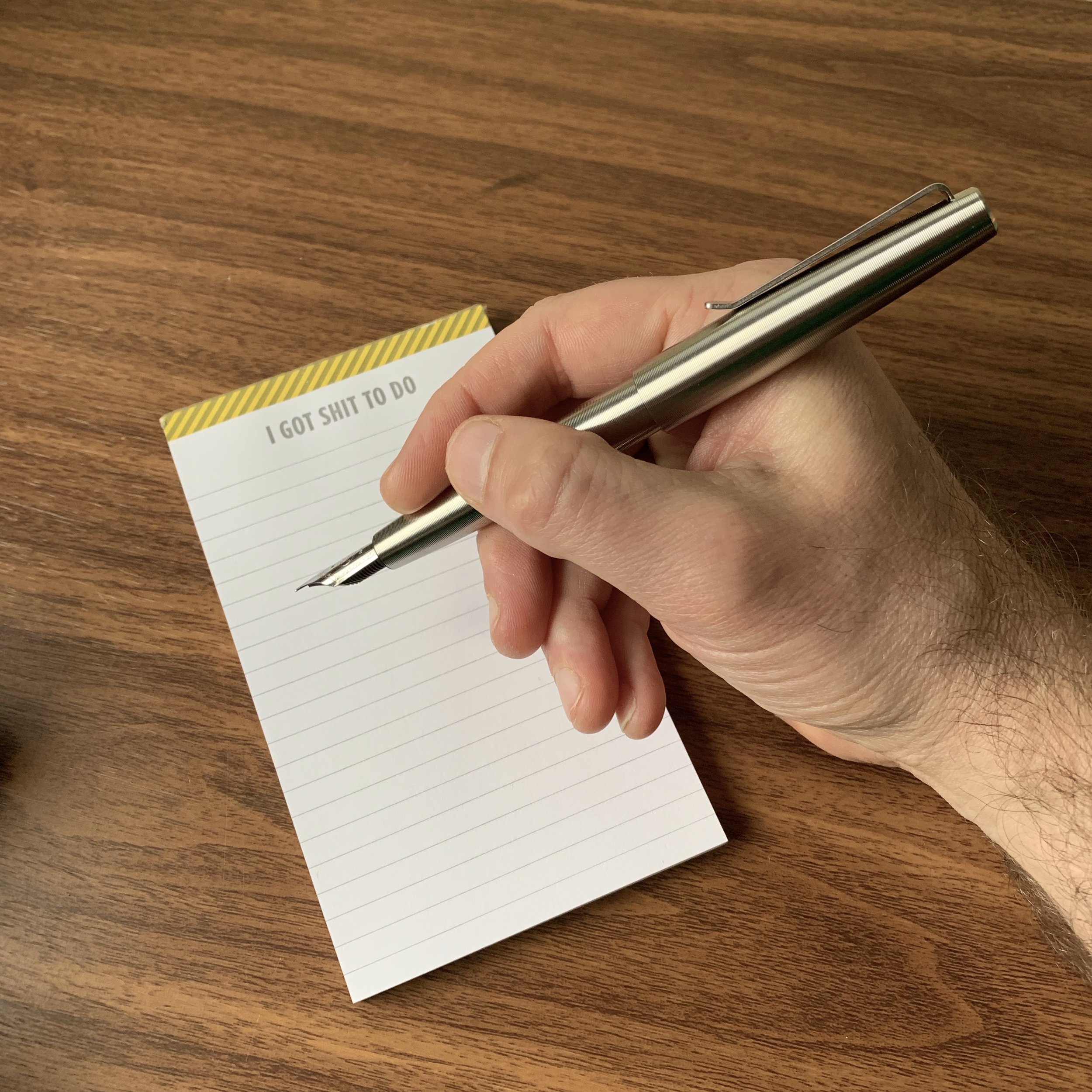So, Joe, why have you been reviewing so many inexpensive fountain pens lately? Why have you been scouring Amazon and eBay for $20 pens when you presumably have cases and drawers full of perfectly nice, much more expensive and higher-quality fountain pens at home, not to mention a zillion other things to review?
Fair questions, all of them. And ones I can easily answer: with a few notable exceptions, I'm getting bored with what the old "mainline" pen companies have been releasing (or not releasing), especially where enthusiasts are being asked to pay ever-increasing prices for products characterized by what I view as a general lack of creativity and innovation. So, as I see new Chinese pen companies moving well beyond the "$1.99 eBay pen" market or Montblanc knockoffs and releasing their own original designs, with legitimately good nibs, I've begun to enjoy exploring the so-called "lower-end" of the market.
Each color version of the pen ships with a different color plastic ball
Some brands stand head and shoulders above the rest. Two of my favorites are Wing Sung and KACO, which in my opinion make some of the better inexpensive pens on the market, to the point where some U.S. retailers are starting to carry them as part of their regular stock. I recently reviewed the KACO Edge, a Makrolon fountain pen that vaguely resembles something that Lamy might have made had they foregone the misguided Aion and created a product for those of us who don't want to write with a metal nightstick. At the same time I purchased the Edge, I picked up the KACO Retro, an even less expensive hooded-nib pen that I think I actually prefer.
Ink window! A nice touch at the price point.
Why do I like this pen so much? For starters, I like hooded nib fountain pens, for both their design and functionality. With the Retro, KACO actually made an effort to design a pen that's not just another inexpensive Parker 51 clone (there are already plenty of those out there). The name "Retro" fits the pen well, from the hooded nib to the injection molded mid-century modern design to the colors that come straight out of the 1960s. I even like the minimalist wire clip, with a contrasting plastic ball acting as the "keeper" on the end.
The hooded steel nib arrived with both the feed and the tines properly aligned, which can be a problem-area with low-cost hooded-nib pens.
The KACO Retro definitely isn't a fancy pen. It feels lightweight and inexpensive, uses a generic yet sturdy plastic converter, and at this price point is something you could give to an older child or just throw in your bag to use as a work or travel pen. But it also writes quite well, better in fact than not only all of the cheap Parker 51 clones I've tried, but better than many of the Parker Super 21 and 51 Special fountain pens I've used. (For those of you who are not vintage pen aficionados, the Super 21 and the 51 Special were lower-end, alloy-nib versions of the Parker 51 that Parker released at a lower price point.)
Sure, it’s a generic plastic converter, but it seems pretty sturdy compared to what I’ve seen on other cheap pens. I do find it odd that this pen comes packaged with a converter, but the KACO Edge (which is more expensive) does not.
The stainless steel nib writes a slightly wider and wetter line than the nib on the Moonman N3, comparable to the KACO Edge though it’s a different nib.
Takeaways and Where to Buy
The KACO Retro isn't going to become my daily writer, but it's a good enough pen that a student or budget conscious fountain pen lover could easily use it as one. Fans of vintage-style hooded-nib pens might consider the KACO Retro as a travel pen, for those who don't want to deal with the risk of using their vintage pens on an airplane, or worry about losing a prized pen at conferences or in an office or hotel room. The barrier to entry is very low, and I have no problem recommending the Retro given the price point.
I purchased this pen from Amazon, and it arrived quickly because it was Prime-eligible. Of course, I went with the orange version, but there are turquoise, burgundy, blue, white, black and turquoise pens available as well.
If companies such as KACO, Moonman, and Wing Sung keep this up, and can sustain a decent level of quality at their current price point, Lamy, Pilot, Pelikan, and a few others will have something to worry about with their mid-tier and entry-level offerings, especially since the trend has been towards higher pricing and spottier quality control. If nothing else, it adds variety and a bit of competition to a segment that traditionally has been dominated by a few pens - not just a few companies - and in my opinion more choice for the consumer is always a good thing.
Editor’s Note and Follow-up
I'm going to take a minute here to supplement my review of the KACO Edge and my thoughts on lower-end pens in general. Despite the overall good quality of both Wing Sung and KACO pens, I've experienced cap cracks with both, which I accept as par for the course in this price bracket. At sub-$20, you're going to have to accept a lower level of manufacturing quality control on the front end, and what becomes important is the extent to which the retailers and manufacturers will support their customers on the back end. In the case of the KACO Edge, I was warned by a reader to be on the lookout for cap cracks, and a week or so after finalizing my review, I found one. I reached out to the Amazon Seller (who I assume is affiliated with KACO), who literally responded within 5 minutes offering to mail me a new cap, and requesting that I send her a photo of the crack with details of its location so she could share with the factory. A far cry from the service you would get when you used to receive a bag of five $2 Jinhaos, and you were lucky if two of them actually wrote.
Disclaimer: This post contains links to paid sponsors and affiliates. I purchased the pen featured in this review with my own funds, for my own use.
